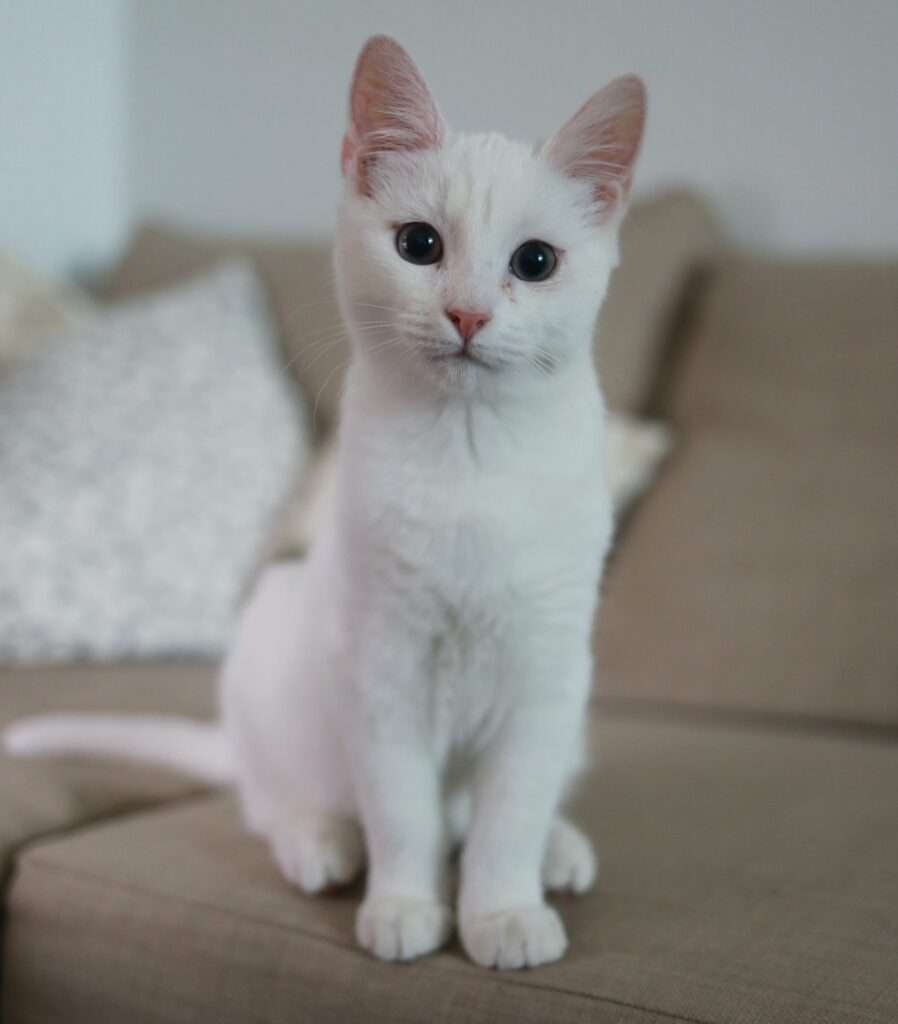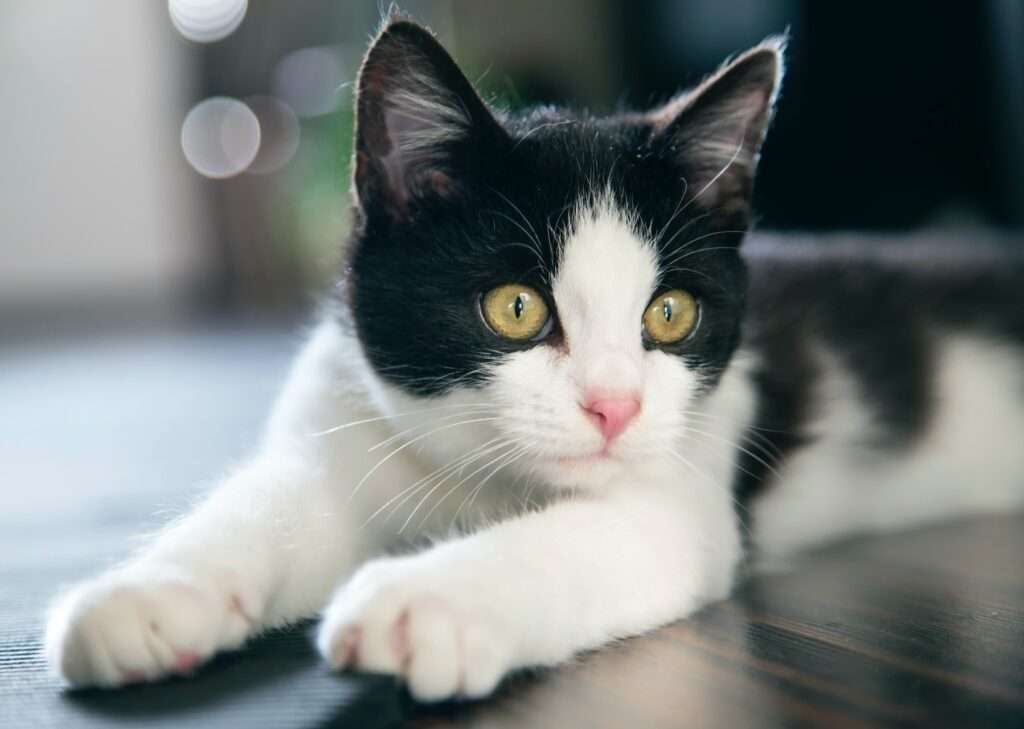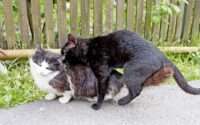Why Does My Cat Stare at Me Without Blinking? The Secrets Behind the Gaze
Welcome to BarkLikeMeow’s comprehensive guide on decoding the enigmatic stare of your feline friend. As devoted cat owners ourselves, we understand the curiosity that arises when your cat locks eyes with you, seemingly without blinking. In this article, we will delve into the intriguing world of feline communication and explore the myriad reasons why your cat may engage in this mesmerizing behavior.
Understanding Feline Communication
When it comes to understanding cats, communication is key. Cats possess a complex system of non-verbal cues that allow them to express their thoughts, feelings, and intentions. From the subtle twitch of their tail to the position of their ears, each movement conveys a specific message. Unsurprisingly, their eyes play a crucial role in this intricate language of feline communication.
A cat’s eyes are windows to their soul, revealing a wealth of information about their emotions and desires. Cats communicate through eye contact, and the duration and intensity of their gaze can speak volumes. Blinking, or lack thereof, is also a significant aspect of this communication. While humans tend to associate blinking with relaxation or trust, cats have a different approach.
Unlike humans, cats may engage in prolonged staring without blinking. This behavior can be perplexing for cat owners, leaving them wondering about its meaning and significance. To truly understand why your cat stares at you without blinking, we must unravel the secrets of feline communication and delve deeper into the nuances of their eye contact.
Stay tuned as we embark on an enlightening journey through the mysterious world of your cat’s unwavering gaze. By the end of this guide, you’ll have a better understanding of your cat’s intentions, emotions, and the unique bond you share. Let’s dive in!
The Power of the Stare
Prepare to be captivated by the hypnotic power of your cat’s unwavering stare. Cats possess an innate ability to communicate a range of emotions and intentions through their eyes. When your feline friend locks eyes with you without blinking, it’s their way of conveying a message that goes beyond mere words.
The intensity and duration of a cat’s stare can be quite mesmerizing. It’s a form of non-verbal communication that demands attention and holds a significant meaning. While humans tend to interpret prolonged eye contact as a sign of aggression or intimidation, cats have a different perspective. For them, it can be a way to establish trust, convey affection, or even express curiosity.
Blinking, or the absence thereof, adds another layer of complexity to this feline communication. Cats may purposefully avoid blinking during prolonged eye contact to maintain their focus and ensure their message is received loud and clear. Their unyielding gaze can be seen as a gesture of connection and a desire for meaningful interaction.
Bonding and Affection
If you’ve ever been on the receiving end of your cat’s unblinking stare, consider yourself honored. It’s often a sign of deep affection and a testament to the bond you share with your feline companion. While it may seem intense, your cat’s unwavering gaze is a way of expressing their trust and attachment to you.
Mutual eye contact plays a vital role in strengthening the bond between humans and cats. When your cat stares at you without blinking, they are seeking a connection, longing for your attention, and inviting you to reciprocate. This form of communication can create a profound sense of closeness and reinforce the bond of love and companionship you both share.
It’s essential to recognize that each cat is unique, and their staring behavior may vary. Some cats may stare more frequently, while others may engage in prolonged eye contact only on specific occasions. By paying attention to their body language and the context of their stare, you can better decipher their intentions and respond accordingly.
Dominance and Territory
Now let us embark on an exploration into the intriguing world of dominance and territorial behavior in cats. While your feline friend’s unwavering stare may seem innocent, it can also be rooted in their natural instincts to establish dominance or protect their territory.
Cats are inherently territorial creatures, and eye contact plays a crucial role in asserting their dominance. When a cat stares at you without blinking, they may be asserting their position or challenging your authority. It’s their way of asserting their confidence and communicating their status within the household hierarchy.
Understanding your cat’s behavior within the context of dominance is vital. If you have multiple cats, prolonged eye contact without blinking may be a sign of establishing or challenging hierarchies. By closely observing their body language and interactions, you can gain valuable insights into the dynamics between your cats and their social structure.
Curiosity and Observation

Cats are notorious for their inquisitive nature, and their unblinking stare is often a manifestation of their insatiable curiosity about the world around them. Your cat’s eyes serve as windows into their inquisitive mind.
When they stare at you without blinking, they’re absorbing information, observing your actions, and attempting to decipher the nuances of their environment. It’s their way of gathering vital clues and understanding their surroundings on a deeper level.
In addition to curiosity, a cat’s unwavering gaze can also be attributed to their innate hunting instincts. Cats are natural-born hunters, and their ability to maintain prolonged eye contact without blinking is part of their predator repertoire. By fixating on their target, they enhance their focus and improve their chances of successful hunting.
Emotional State and Communication
Join us now as we go on an emotional journey through the depths of your cat’s feelings and the role of their unblinking stare in communication. Cats are complex creatures with a rich range of emotions, and their unwavering gaze can provide valuable insights into their emotional state.
When your cat stares at you without blinking, it’s essential to consider the context and accompanying body language. While a loving gaze can express contentment and happiness, a prolonged stare coupled with flattened ears or dilated pupils may indicate fear or anxiety. Understanding these emotional cues is crucial for providing your cat with the care and support they need.
Communication through unblinking eye contact goes beyond expressing emotions. It can also be a way for your cat to convey their needs and desires. By observing their gaze, you can decipher whether they’re seeking attention, expressing dissatisfaction, or even attempting to initiate playtime.
To truly understand the messages behind your cat’s stare, it’s important to establish a strong bond and familiarize yourself with their individual behavior patterns. By recognizing and responding to their emotional cues, you can strengthen your connection and create a harmonious environment for both you and your feline companion.
Medical and Health Considerations
While a cat’s unblinking stare may primarily be a form of communication, it’s crucial to be aware of potential medical and health considerations that could underlie this behavior. In some cases, excessive staring without blinking can be indicative of an underlying health issue that requires attention.
If you notice that your cat’s staring behavior is persistent or accompanied by other concerning symptoms, it’s essential to consult a veterinarian. Your cat’s health should always be a priority, and professional guidance can help identify any underlying medical conditions or discomfort that may be contributing to their behavior.
Keep an eye out for additional signs such as changes in appetite, weight loss, lethargy, or any unusual behaviors. These could provide valuable clues for your veterinarian in diagnosing and treating any potential health concerns. Remember, early detection and timely intervention can make a significant difference in your cat’s overall well-being.
While it’s natural to be curious about your cat’s behavior, it’s important to approach their health with a responsible mindset. By seeking professional advice when needed, you can ensure that your cat receives the proper care and attention they deserve.
Environmental Factors

Get ready to uncover how environmental factors shape your cat’s unwavering gaze. Cats are highly sensitive to their surroundings, and changes in their environment can contribute to this behavior. Understanding these factors can help create a more enriching and comfortable environment for your feline companion.
Environmental stimuli, such as new furniture, rearranged spaces, or the presence of unfamiliar people or animals, can trigger prolonged staring. Cats rely on their keen observation skills to navigate their surroundings, and when faced with changes, they may engage in unblinking eye contact as a way to process and acclimate to their new environment.
To minimize the impact of environmental stressors on your cat, consider providing them with a consistent routine and designated spaces where they feel safe and secure. Creating a calm and enriching environment that offers opportunities for mental and physical stimulation can help alleviate staring behavior that arises from environmental factors.
Training and Modification Techniques
While it’s important to remember that a cat’s stare is a natural form of communication, there may be instances where you wish to redirect or modify this behavior. Patience, consistency, and positive reinforcement techniques are key when embarking on this journey.
Redirecting your cat’s behavior can be achieved through various means. For example, when you notice your cat staring without blinking, gently redirect their attention to an engaging toy or interactive play session. Positive reinforcement, such as rewarding desired behaviors with treats or praise, can help shift their focus and encourage alternative behaviors.
Consistency is paramount when training or modifying your cat’s behavior. Establish clear boundaries and expectations, and reward your cat when they exhibit the desired behavior. Avoid punishment-based methods, as these can lead to fear or anxiety in your cat and may worsen the staring behavior.
Remember, each cat is unique, and what works for one may not work for another. Be patient and observant, paying attention to your cat’s individual needs and responses. If you find yourself struggling or seeking more guidance, consider consulting a professional animal behaviorist who can provide tailored strategies to address specific concerns.
By employing positive reinforcement techniques, respecting your cat’s individuality, and understanding their unique communication style, you can help shape their behavior in a way that promotes a harmonious and loving relationship.
Seeking Professional Advice
In the quest to understand and address your cat’s unblinking stare, there may come a time when seeking professional advice becomes necessary. Certified animal behaviorists are invaluable resources who can provide expert guidance tailored to your specific situation.
If you find yourself facing complex or persistent staring behavior, consulting a certified animal behaviorist can offer invaluable insights. These professionals possess in-depth knowledge of feline behavior and can conduct thorough assessments to uncover underlying causes and develop customized behavior modification plans.
A behaviorist can help you navigate the intricacies of your cat’s communication and provide you with practical strategies to address the staring behavior effectively. They will consider various factors such as your cat’s environment, history, and individual temperament to create a comprehensive plan that prioritizes your cat’s well-being.
Do note that seeking professional advice is not a sign of failure but rather a proactive step towards understanding and improving your cat’s behavior. With their expertise and guidance, you can work together to strengthen the bond between you and your feline companion.
Conclusion
Congratulations on completing our comprehensive exploration of why your cat stares at you without blinking. We hope this guide has provided you with valuable insights into the fascinating world of feline communication and behavior.
Throughout this journey, we’ve unraveled the power of the stare, discovering how it can express affection, establish dominance, convey curiosity, and serve as a medium for emotional connection. We’ve explored the influence of environmental factors, recognized the importance of understanding your cat’s emotional state, and discussed the potential impact of medical considerations.
Furthermore, we’ve delved into training and modification techniques, emphasizing the significance of positive reinforcement, consistency, and respecting your cat’s individuality. And when faced with complex cases or persistent behavior, we’ve highlighted the value of seeking professional advice from certified animal behaviorists.
Remember, every cat is unique, and their unblinking stare is just one aspect of their multifaceted communication. By observing their body language, paying attention to their environment, and fostering a loving and supportive relationship, you can enhance the bond you share with your feline friend.
We hope this guide has empowered you with the knowledge to better understand and appreciate your cat’s unblinking stare. Embrace these moments of connection and continue to cherish the special relationship you have with your beloved feline companion. Here’s to many more captivating gazes and moments of feline communication!
Q: Why does my cat stare at me without blinking?
A: Cats use their gaze as a form of communication. It can indicate affection, curiosity, or even a display of dominance.
Q: Is it normal for my cat to stare at me for long periods without blinking?
A: Yes, it can be normal. Cats have a unique ability to maintain prolonged eye contact. However, if the behavior is accompanied by signs of discomfort or aggression, it’s advisable to consult with a veterinarian.
Q: How can I tell if my cat’s stare is friendly or aggressive?
A: Friendly stares are typically accompanied by relaxed body language, slow blinking, and a calm facial expression. Aggressive stares, on the other hand, may involve dilated pupils, flattened ears, or a tense posture. It’s essential to consider the overall context and accompanying body language.
Q: Can a cat’s unblinking stare be a sign of affection?
A: Yes, a cat’s unblinking stare can be a sign of affection. When your cat stares at you without blinking and has a relaxed posture, it may be expressing trust, contentment, and a desire for your attention or physical contact.
Q: Why does my cat stare at me without blinking while I’m eating?
A: Cats are naturally curious and may be attracted to the smell or sight of food. They may stare in anticipation or try to communicate their interest in sharing the meal. It’s important to establish boundaries and avoid reinforcing begging behavior.
Q: Can I train my cat to stop staring at me without blinking?
A: While you cannot completely eliminate a cat’s natural behavior, you can redirect their attention through positive reinforcement techniques. Encouraging interactive play and providing engaging toys can help shift their focus and reduce excessive staring.
Q: Should I be concerned if my cat stares at me without blinking in a new environment?
A: Cats rely heavily on observation and may stare without blinking when placed in unfamiliar surroundings. It’s their way of assessing the environment and adjusting to the changes. As long as they appear calm and show no signs of distress, it’s likely a normal response.
Q: Should I be concerned if my cat stares at me without blinking all the time?
A: Excessive and persistent staring without blinking, especially when accompanied by other unusual behaviors or health issues, may warrant a visit to the veterinarian. It’s important to rule out any underlying medical conditions that could be contributing to the behavior.
Please note that these answers serve as general guidelines, and individual cat behavior may vary. If you have specific concerns or questions about your cat’s behavior, it’s always best to consult with a professional, such as a veterinarian or animal behaviorist, for personalized advice.





